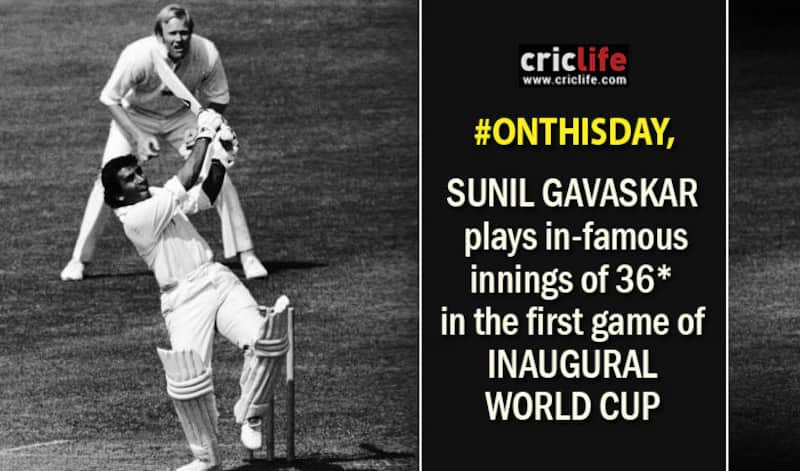
Chinmay Jawalekar
A self-confessed cricket freak, Chinmay Jawalekar is a senior Writer with CricketCountry. When not writing or following cricket, he loves to read, eat and sleep. He can be followed at @CricfreakTweets.
Written by Chinmay Jawalekar
Published: Jun 07, 2016, 08:35 PM (IST)
Edited: Jun 07, 2016, 08:35 PM (IST)

Much before the Twenty20 (T20) cricket became a rage; One-Day Internationals (ODIs) were the darling of the crowds. The excitement of watching fours and sixes being hit would bring them all the way to the stadiums to watch a day-long match which produced a result at the end of the day. The first ODI, which was played in 1971, paved the way for the first-ever ODI World Cup in 1975. Being played between eight sides, the tournament had 16 matches of 60-overs each, which was a norm back then. And while the ODI format and the World Cup firmly established their feet after the first edition and became crowds’ favourite, there is something that happened in the opening match of the tournament which left many of them furious.
The backdrop
All the eight teams came into the World Cup with a clean slate except India, who perhaps had their internal demons to fight with. Almost exactly a year back, in a different format, Indians were bowled out for their lowest Test score of 42 by England at Lord’s. Both these teams were pitted against each other in the same group in the World Cup. The inaugural match of the inaugural edition was scheduled to be played between these two teams at the same venue and when the day came, both the teams fielded seven players each who were a part of that Test where India were routed. England captain Mike Denness won the toss and opted to bat, a decision vindicated by his batters as England piled up 334 runs from the stipulated 60 overs.
When it happened
When India came out to chase, it was Sunil Gavaskar and Eknath Solkar who opened the innings for them. The duo had its task cut out after the Indian bowlers had leaked a massive amount of runs and left them with a target almost impossible to chase. The openers, especially Gavaskar, came out with perhaps a defensive mindset, already having accepted defeat in their minds. Gavaskar started his innings with caution, a trait acceptable and common at the start of the innings where a batsman tries to gauge the playing conditions and nature of the pitch. However, little did the fans know that he would go on to bat till the end with the same approach.
He played at a snail’s pace all throughout the Indian innings and ‘carried his bat’; a feat worth applause in Tests but far from it in that particular match. The Indian innings, which was marked by numerous pitch invasions by the ‘pleading-crowd’ which wanted the batsmen to ‘die-fighting’, ended on 3 for 132 from 60 overs. Gavaskar returned back with his ‘tutle-paced’ 36 not out from 174 balls; a knock which saw him hit a solitary boundary. India lost by a huge margin of 202 runs, virtually ruling them out of the competition in case run-rate came into play.
The aftermath
When Gavaskar returned back to the dressing-room, no body uttered a single word. Various theories and rumours floated around as to why he batted so slow and played a Test-like innings. While some said he was unhappy with the team selection, others ranged from the target being unachievable, his unhappiness at not being named the captain and that he wanted to avert another collapse similar to the 42-all out effort. India were eventually knocked out of the tournament after they lost to New Zealand. They were comforted by a solitary win over the lowly East Africa, where Bishan Singh Bedi bowled his career best spell of 12-8-6-1.
(A self-confessed cricket freak, Chinmay Jawalekar is a senior writer with CricLife and CricketCountry. When not writing or following cricket, he loves to read, eat and sleep. He can be followed here @CricfreakTweets)
This website uses cookies so that we can provide you with the best user experience possible. Cookie information is stored in your browser and performs functions such as recognising you when you return to our website and helping our team to understand which sections of the website you find most interesting and useful.
Strictly Necessary Cookie should be enabled at all times so that we can save your preferences for cookie settings.
If you disable this cookie, we will not be able to save your preferences. This means that every time you visit this website you will need to enable or disable cookies again.
